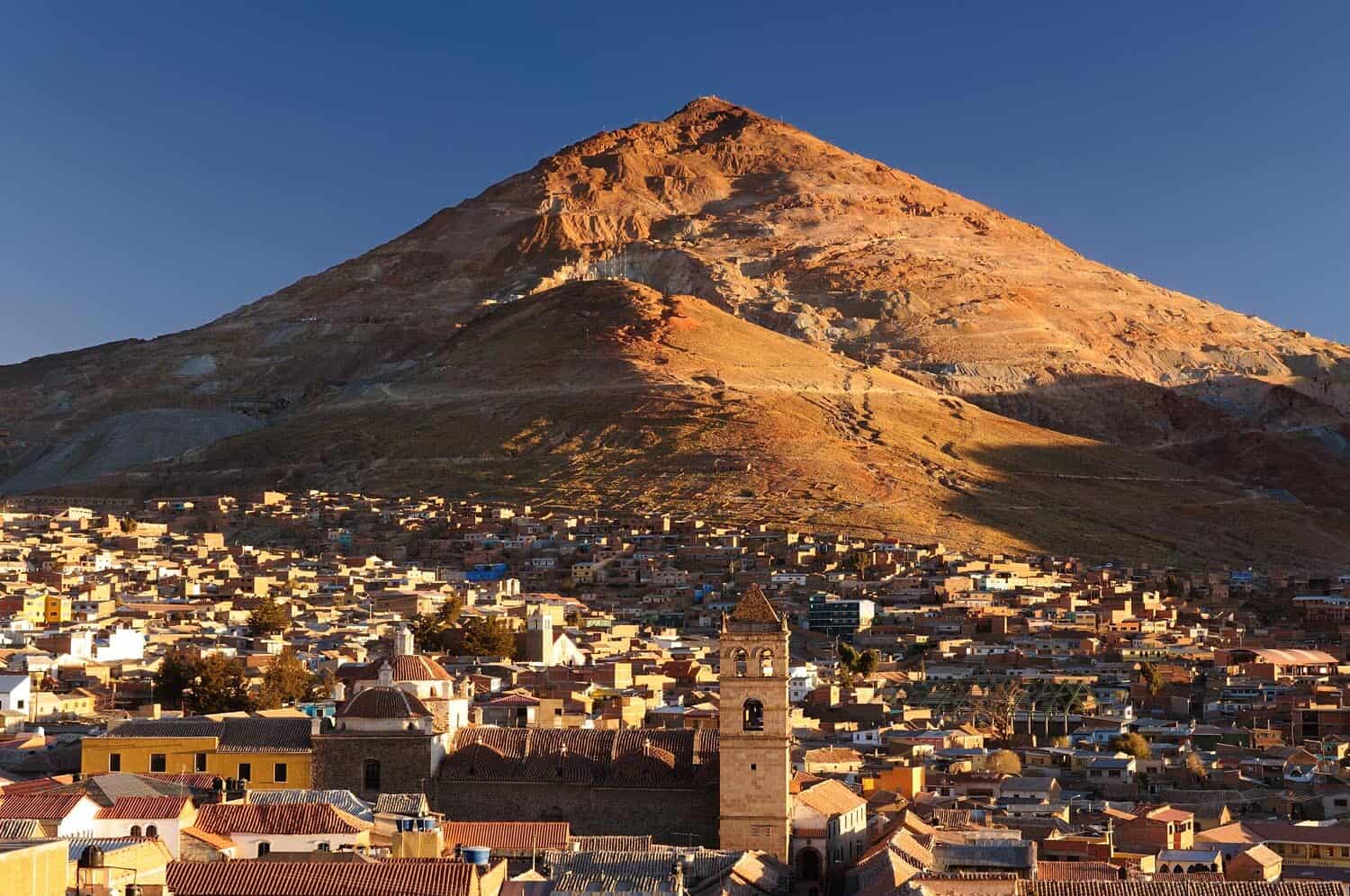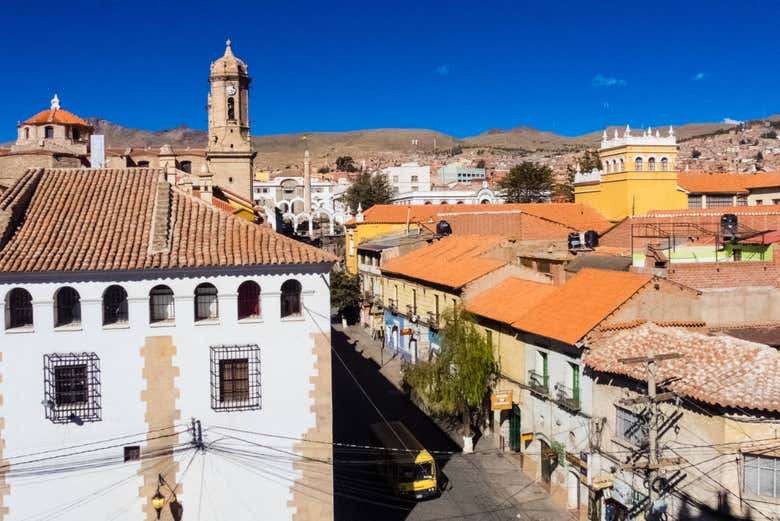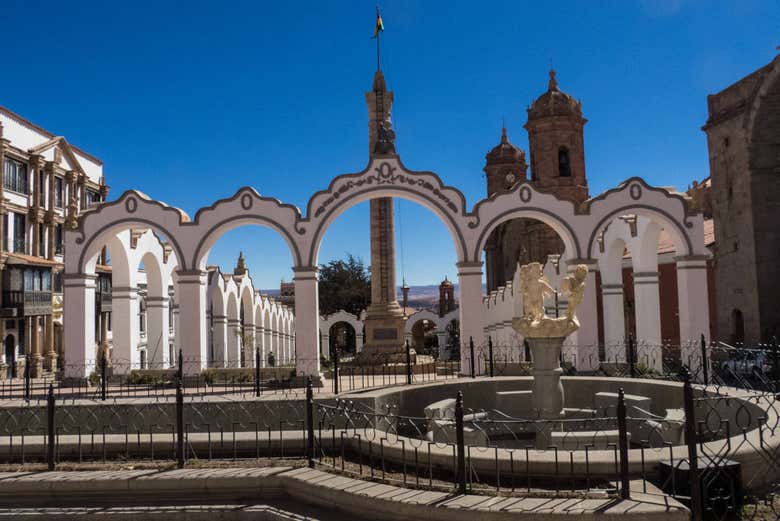Potosì

Only those who have been there can understand it. But arriving in Bolivia and visiting Potosi is a pure emotion.
Especially if you arrive from Sucre, and curve after curve, you find yourself in a flash at 4,090 meters above sea level. At first, you feel or maybe fear the altitude, but then little by little you get used to it and understand why walking slowly is profoundly important when you arrive at these altitudes.
Every single step can seem more tiring, you learn to live with shortness of breath, and you are not surprised if you also find it more difficult to breathe than elsewhere. In Bolivia, there is still a saying that best represents this city, which is very different from the others.
It says: "worth a Potosi." It roughly means something that is worth a fortune! Potosi, on the other hand, is renowned for being the highest city in the world, but also for its still active mines that have made it famous everywhere.

The city, in its intact colonial appearance, stands at the foot of Cerro Rico (Rich Mountain), the mountain from which so much silver was extracted that, it is said, a bridge could have been built from here to Madrid.
Click to discover Potosi "alley by alley"!

The city is not particularly large. It can be visited in a day. But stopping here is definitely worth it. Since 1987, Potosi has been a UNESCO World Heritage Site. To the visitor's eye, the city has a dual appearance.

Arriving from Sucre, you immediately see its outskirts with houses, mainly low, left still in the raw state to benefit from tax breaks granted to the owners by the Bolivian government. The center, on the other hand, boasts an opulent neo-colonial architecture, rather elegant and colorful, which stands along steep and deeply steep streets and is seen walking through the numerous alleys adorned with imposing churches, surrounded by colonial buildings or colorful houses with wooden balconies.
Therefore, the Andean Baroque prevails, which combines amicably elements of European Baroque with elements of the local culture (Andean, precisely!). The most important monument in the city remains the Casa Real de la Moneda, the colonial royal mint, which has some valuable pieces of colonial religious art and is considered one of the most beautiful museums in South America.

Not far from here is the Convento de Santa Teresa, from 1685: one of the best museums of sacred art in Bolivia, as well as a "cemetery" for many young women of good family and a humble dwelling for a small community of Carmelite nuns. The city's nerve center, on the other hand, is Plaza 10 de Noviembre, from where you can quickly reach the Cathedral, the Tower of the Society of Jesus, the Convent of San Francisco, and the Church of San Lorenzo.
The historic center of Potosi was born, roughly, between the sixteenth and seventeenth centuries. In those years, the city was really rich, and the population grew to almost 200,000 inhabitants. The reason for this wealth was attributable to the silver resources of Cerro Rico: the mountain that overlooks the inhabited center.
In just a few years, Potosi developed around that silver mine to the detriment of the work of so many Indian slaves who died in the mine tunnels Within a few years, Potosi developed around a silver mine at the expense of the work of many Indian slaves who died in the thousands in the mine tunnels.
Click to discover an interesting reportage "en la minas de Potosi" that is worth more than a thousand words!

Founded in 1546 as a mining city, it became the main prey of Spanish colonizers.
The amount of silver exported to Europe over two centuries could have created wealth for Potosi and perhaps for the entire Andean Bolivia. However, it only enriched the colonizers at the expense of the local population, which, with the exhaustion of the deposits, was abandoned to itself and now lives with a thousand expedients and not a few difficulties. But not only that.
The sudden scarcity of silver was also interpreted by the Incas as a kind of divine punishment for stealing Sumaj Orcko: the beautiful mountain. The Incas, too, were able to extract metals and precious stones, but they did so exclusively to offer them to their gods.
Click and watch a video (in 4K) on the "Rich Mountain" of Potosi.

Over the centuries, silver resources have gradually diminished and the rich and splendid Potosi has become decidedly less lively but still very attractive to the traveler.
Its history is also told on the streets, in local venues or at the central market if you are lucky enough to meet a "mineros" who could probably conquer you with those stories that, at first glance, might seem like a movie.Yet they are the profound and harsh "law" of Cerro Rico!
Click to listen to an exciting song dedicated to "los Mineros", whose lyrics are also available online!

Video: Potosì
Map: Potosì
Address: Municipio Chaquí Bolivia
Municipio Chaquí Potosí
Latitude: -19.66845297437421
Longitude: -65.43045043945311
Site: http://www.potosi.gob.bo/gober...
vCard created by: Marco Cadelli
Currently owned by: Marco Cadelli
Type: City
Function: Public place
Creation date: 11-03-2023 23:23
Last update: 13/03/2023